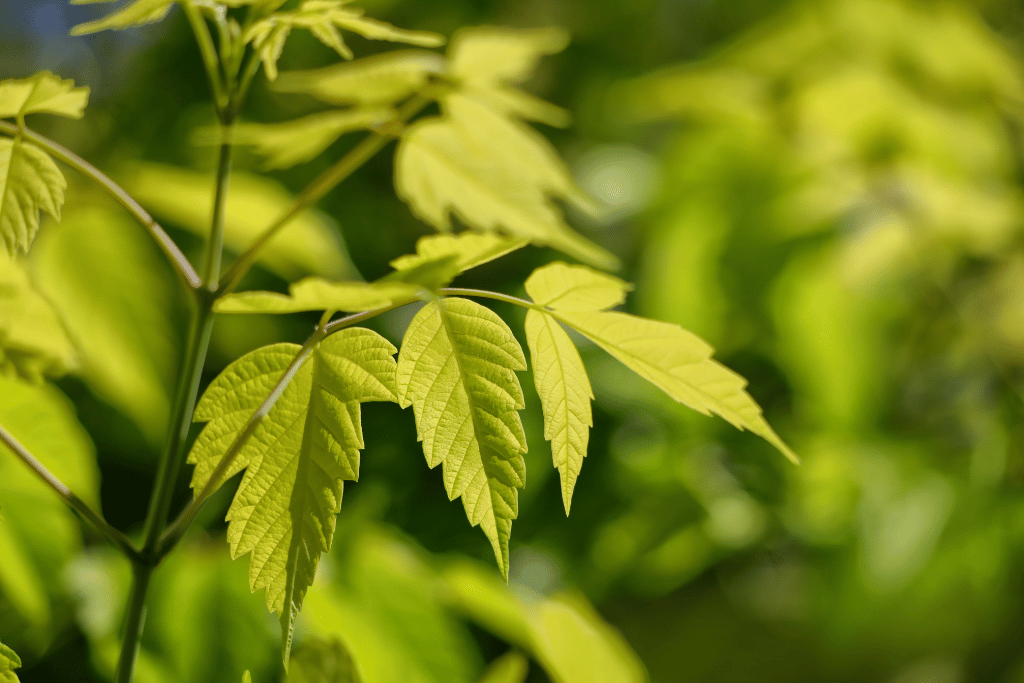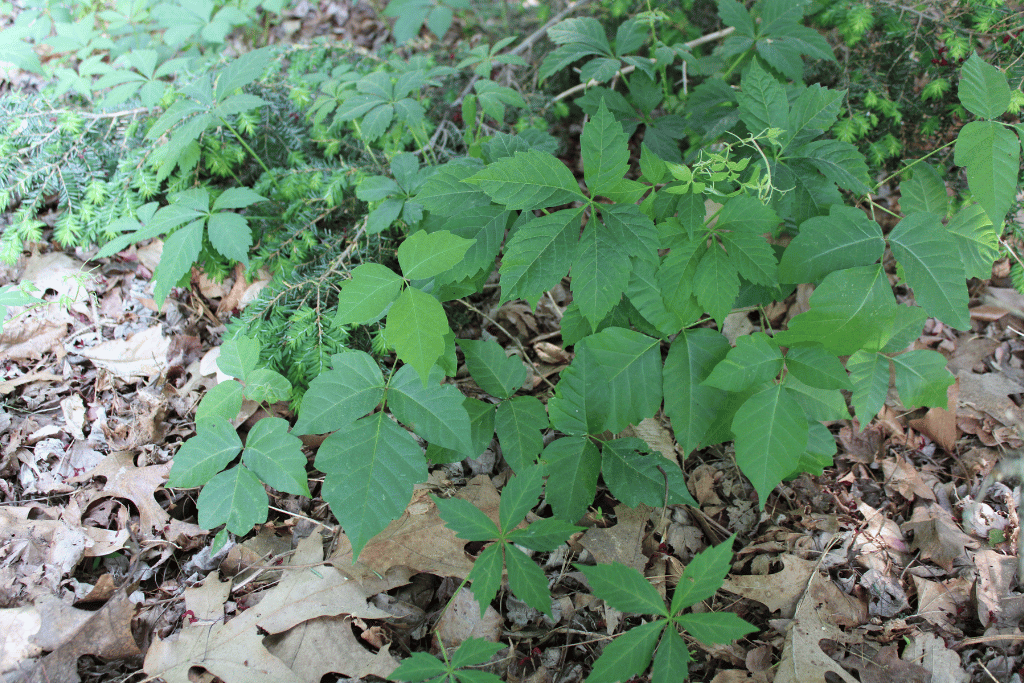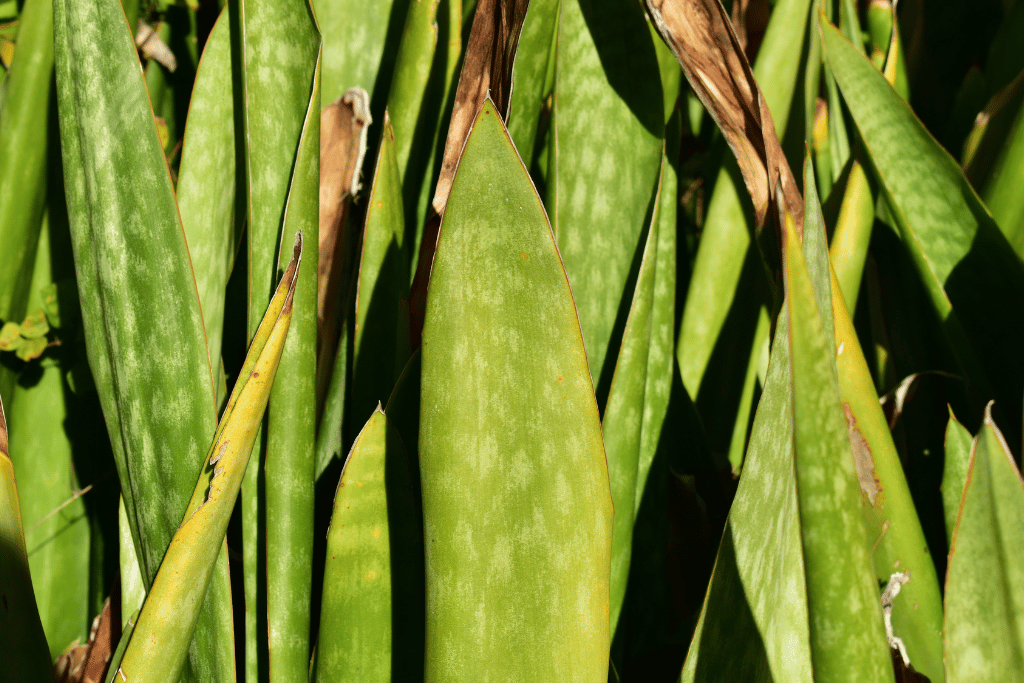Known as Acer negundo, the box elder plant can be easily confused with Toxicodendron radicans, the Eastern poison ivy plant. This typically happens when the two are young, as they both have three leaflets with a middle leaflet stemming from a longer stalk. Though, it’s pretty easy to tell the two apart through the growth habit, leaf arrangement and aerial roots.
The box elder plant is a maple tree that has compound leaves, and it’s native to North America. They are usually found in riparian areas (land adjacent to streams) and close to wetlands. On the other hand, the eastern poison ivy plant is a perennial vine that can vary a lot in its appearance and is pretty nasty to handle.
So, how can we tell the difference between these two plants? It’s pretty important to know, so we can ensure we can care for them properly or even avoid contact with the sap of Eastern poison ivy’s, which is known to cause allergic reactions.


Box Elder vs Poison Ivy
Let’s start off with the growth habits. Box elder plants develop into trees, which are free-standing. Poison ivy are vines which climb with their aerial roots, only being able to put a few feet of height on without support.
Another easy sign to spot with these plants is their difference in leaf. Box elders have a different arrangement of leaves – they are opposite. This means that leaf nodes are at the same spot on the stem. Their stem color can vary and can either be blue-white or a slightly red tone. Poison ivy has an alternate arrangement of leaves, meaning that each leaf node develops a few centimeters up the stem from the other one on the other side of the stem. Their stem color can also vary, but it’s more likely to be slightly red or brown. Aerial roots are usually easy to spot on poison ivy as well.
Now, let’s move on to their leaflets. Box elders can vary in their number of leaflets, though three leaflets are relatively standard. Mature box elders typically have around 5-7 leaflets, with seedlings having simple leaves. The poison ivy pretty much always has three leaflets, making it easy to identify.
Both of these plants produce fruit. As the box elder is a maple, they produce samaras which are borne in pairs. These samaras are pretty easy to identify, as they look like little helicopters when they fall to the ground, helping to spread them further. Poison ivy instead produces large clusters of berries, which are whitish when ripe and quite waxy to the touch.
Frequently Asked Questions (FAQ)
How can you tell the difference between poison ivy and poison oak?
Poison oak looks similar to poison ivy, but it’s possible to tell the difference. Poison oak leaves are larger and more rounded, similar to an oak tree leaf. You’ll also find a textured and hairy surface on poison oak leaves.
What are some more lookalikes of poison ivy?
Along with box elder, there are a few more lookalikes of poison ivy which a lot of people can mistake them for. For example, the most commonly mistaken for poison ivy are raspberry, blackberry, Boston ivy, Virginia creeper, jewelweed and fragrant sumac. It’s possible to tell the difference between these plants by looking at their leaf arrangements, growth habits and other characteristics.
Does poison ivy rash go away on its own?
Yes. Poison ivy rash will eventually go away on its own without any treatment. Even though it may be quite itchy and annoying to deal with, it’s essential that you don’t itch any blisters, as this could cause an infection which will need medical treatment. It’s essential that whenever you handle poison ivy, you wear thick gloves to prevent any rashes from occurring. I’ve found it particularly useful to run your hands under cold water when exposed to any poison ivy. This will help to wash any of the plant oil off your hands, which could spread, causing a further rash – this is also recommended by the FDA.
Can poison ivy show up in my garden?
Yes, it’s most commonly found growing up on the bark of trees, so if you have any in your gardens, look out for poison ivy. It’s important to try and mitigate the spread of them as early as possible; otherwise, they could become a problem to deal with later. Poison ivy isn’t endangered, so don’t feel too bad about removing them from your garden, especially if you have children who don’t listen to your warnings!



